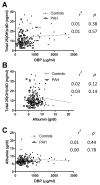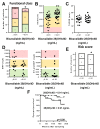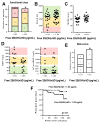Total, Bioavailable, and Free Vitamin D Levels and Their Prognostic Value in Pulmonary Arterial Hypertension
- PMID: 32041235
- PMCID: PMC7073767
- DOI: 10.3390/jcm9020448
Total, Bioavailable, and Free Vitamin D Levels and Their Prognostic Value in Pulmonary Arterial Hypertension
Abstract
Introduction: Epidemiological studies suggest a relationship between vitamin D deficiency and cardiovascular and respiratory diseases. However, whether total, bioavailable, and/or free vitamin D levels have a prognostic role in pulmonary arterial hypertension (PAH) is unknown. We aimed to determine total, bioavailable, and free 25-hydroxy-vitamin D (25(OH)vitD) plasma levels and their prognostic value in PAH patients. Methods: In total, 67 samples of plasma from Spanish patients with idiopathic, heritable, or drug-induced PAH were obtained from the Spanish PH Biobank and compared to a cohort of 100 healthy subjects. Clinical parameters were obtained from the Spanish Registry of PAH (REHAP). Results: Seventy percent of PAH patients had severe vitamin D deficiency (total 25(OH)vitD < 10 ng/mL) and secondary hyperparathyroidism. PAH patients with total 25(OH)vitD plasma above the median of this cohort (7.17 ng/mL) had better functional class and higher 6-min walking distance and TAPSE (tricuspid annular plane systolic excursion). The main outcome measure of survival was significantly increased in these patients (age-adjusted hazard ratio: 5.40 (95% confidence interval: 2.88 to 10.12)). Vitamin D-binding protein (DBP) and albumin plasma levels were downregulated in PAH. Bioavailable 25(OH)vitD was decreased in PAH patients compared to the control cohort. Lower levels of bioavailable 25(OH)vitD (<0.91 ng/mL) were associated with more advanced functional class, lower exercise capacity, and higher risk of mortality. Free 25(OH)vitD did not change in PAH; however, lower free 25(OH)vitD (<1.53 pg/mL) values were also associated with high risk of mortality. Conclusions: Vitamin D deficiency is highly prevalent in PAH, and low levels of total 25(OH)vitD were associated with poor prognosis.
Keywords: prognosis; pulmonary arterial hypertension; survival; vitamin D.
Conflict of interest statement
The authors declare no conflicts of interest regarding the present study.
Figures






References
-
- Galie N., Humbert M., Vachiery J.L., Gibbs S., Lang I., Torbicki A., Simonneau G., Peacock A., Vonk Noordegraaf A., Beghetti M., et al. 2015 ESC/ERS Guidelines for the diagnosis and treatment of pulmonary hypertension: The Joint Task Force for the Diagnosis and Treatment of Pulmonary Hypertension of the European Society of Cardiology (ESC) and the European Respiratory Society (ERS): Endorsed by: Association for European Paediatric and Congenital Cardiology (AEPC), International Society for Heart and Lung Transplantation (ISHLT) Eur. Respir. J. 2015;46:903–975. doi: 10.1183/13993003.01032-2015. - DOI - PubMed

